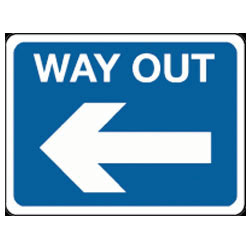Over the past four years some of us may have forgotten that the financial crisis did not start in Europe, but in the USA. If it makes sense to ask ourselves where it all started, it is even more relevant for us to understand what happened on this side of the Atlantic. It is in fact in Europe that the crisis (or the crises) has found a fertile ground to develop and unravel the Eurozone. “Spread”, “bailout”, “rating agency” have become terms that Europeans have become acquainted with, while austerity policies have hit them as it has not happen for decades.
In addition, the crisis came at a time of extreme volatility in global, European and national politics and has arguably contributed to accelerate some trends which were already starting to appear at the beginning of the century. The consolidation of Asia as the new engine of economic growth; the rise of new economic powers such as the BRICS; the negotiations of extensive Free Trade Agreements in an attempt to benefit from acces s to growing markets and to US to maintain an upper hand in setting global standards (among the others the EU and South Korea FTA and the on-going negotiations between EU and Canada, and the EU and the USA). Domestically the EU is also facing new tensions: a sharp rise of euro-scepticism and of nationalist movements has been registered in many European countries, including Italy, France, Germany, Hungary and the UK, with the UK arguing for a referendum on its own EU membership in 2017. Separatist movements are getting stronger in several regions including Scotland, Catalonia and Flanders. Last but not least, socio-economic challenges are increasingly evident, with unprecedented rates of youth unemployment, an ageing population and the European welfare systems increasingly under pressure.
s to growing markets and to US to maintain an upper hand in setting global standards (among the others the EU and South Korea FTA and the on-going negotiations between EU and Canada, and the EU and the USA). Domestically the EU is also facing new tensions: a sharp rise of euro-scepticism and of nationalist movements has been registered in many European countries, including Italy, France, Germany, Hungary and the UK, with the UK arguing for a referendum on its own EU membership in 2017. Separatist movements are getting stronger in several regions including Scotland, Catalonia and Flanders. Last but not least, socio-economic challenges are increasingly evident, with unprecedented rates of youth unemployment, an ageing population and the European welfare systems increasingly under pressure.
Together these external and domestic challenges, mixed with the aftermath of the Eurozone crisis in all its facets, constitute an explosive mix. As we are approaching a key electoral year, with the elections of the European Parliament as well as with national elections in several countries including Germany, it is about time to draw some lessons from what happened in Europe and to envisage a possible way to move forward.
The European crisis, a unidentified flying object
As a first step we may wish to understand better which type of crisis is affecting Europe. Apart from the Irish case, on this side of the Atlantic the financial crisis has soon turned into a debt crisis, or, more precisely, into a banking crisis for some countries (e.g. Spain and Cyprus) and in a sovereign debt crisis for others (e.g. Greece and Italy). At the same time, if we look at what debt actually represents and if we look at the weaknesses of our banking sector, we could argue that it is not only about accumulation of debt or of risky investments. We are instead confronted with first and foremost a confidence crisis in the future of Europe and in our ability to remain competitive in this new century. Investing in Greek, Spanish, Italian or German bonds, in fact, means to trust that each government will be able to pay their debt back in 1, 5 or 10 years time. Such confidence started to fade and this situation was exacerbated by our institutional weaknesses, and more precisely by the fact that the Eurozone countries have a monetary union but not have an actual political and banking union. It follows that, differently from what happened in the US – where the various states have imbalances comparable to that of the countries using the euro – the financial market lost confidence in the sustainability of the Eurozone but not in the sustainability of the “dollar-zone”. And this despite the fact that the US overall debt burden is significantly higher than that of the Eurozone (in April 2013 the Eurozone debt/GDP ratio was at 90,6% while the US debt/GDP ratio was 107%).
It follows that the institutional setting put in place in Maastricht to run the monetary union was sufficient at a time of economic growth, but has resulted to be inadequate for the times of economic stagnation or recession. It follows that EU’s inability to deal effectively and systematically with the crisis is at the heart of the European crisis. In other words what we are facing an institutional crisis which could not be tackled by the existing European institutions on the basis of existing treaties. It follows that through an unprecedented number of high level meetings and summits, our heads of states have attempted to manage the consequences of the crisis in a “trial and error” mode and always in a climate of emergency. This was partly due to the lack of an ambitious vision for a post-crisis Europe, and party to the lack of democratic legitimacy to amend the founding treaties and the related fear of having to go through a new ratification process (including referenda in certain countries). The result was that the measures adopted have often been piecemealed solutions, arrived too late, and lacked a comprehensive master plan (e.g. the implementation of the banking union is yet to be finally agreed). More importantly, the intergovernmental process through which the decisions have been taken has further reduced the democratic legitimacy of the European decision-making process. It follows that the structural crisis slipped into a democratic-deficit crisis at European level. In fact, the only democratically elected European institution and co-legislator together with the Council of the EU – the European Parliament – had no role in managing the crisis. Similarly, the European Commission, representing the EU interest was largely side-lined. On the contrary, a key role was played with by European Council and by a few member states in a fully intergovernmanental manner, by the Troika – composed by the IMF, the ECB and the European Commission -, and by the ECB which played a crucial role in avoiding the rise of crisis-hit countries borrowing cost, but without any democratic mandate.
At domestic level the democratic crisis evolved instead into a political crisis which translated into the appointment of technical governments in countries such as Italy and Greece, and in the rise or strengthening of nationalistic and eurosceptic movements in several EU Member States. Europeans are less and less engaged in national politics convinced of its inability to deliver on the promises of employment and welfare. At the same time, they are increasingly unhappy with the European Union. If the latter was initially perceived as a successful example of European solidarity, the crisis has shadowed such image. In addition Europeans are frustrated by the inaction of the European institutions in areas in which they would expect “Europe” to act but in which, paradoxically, the European institutions have still limited competence. In other words, we are confronted with a double expectations-capability gap – and double frustration for the citizens . If at the national level member states are less and less able to tackle global challenges, at the European level, the EU does not yet have the competencies and the institutional tools to take the relay.
Is there a way out?
From the situation outlined above, it is clear that Europe has been hit by a multiple set of crises, which have been aggravated by the current global challenges and by the current titling of the global economy towards East. What Europe needs probably the most is to find its place in this new global context, picture itself in this new century and give itself a vision of how Europe should look like in 50 years’ time. This vision, however, must be framed taking into consideration the fact that the world will not wait Europe to change, and will continue changing anyway. Clearly tackling the structural crisis is crucial to increase the resilience of the EU vis-à-vis future economic and financial crises. At the same time it is increasingly urgent to face also the political and democratic crises to avoid that the whole of the European project unravel. Both the structural crisis on the one hand, and political and democratic crisis on the other hand, require us to think of what the European Union is today, if it is delivering what the citizens need, and what it ought to be in the coming decades in order to tackle today’s and tomorrow’s challenges. In other words, we need to face yet another crisis, probably the sneakiest one, and yet the most important one: the EU’s identity crisis which resembles a lot to a “mid-life crisis”. Such crisis however, will not be solved if each national political party keep worrying exclusively of the results of next elections. The time-span must be much longer.
Over the past few years an increasing number of high level politicians have come forward, even though often timidly, with some vision for the future. Jose Manuel Barroso and Carl Bildt rehearsed Delors’ demand for the creation of a “Federation of Nation States”, Angela Merkel called for a “political union” while Tony Blair, Nicolas Sarkozy as well as Christine Lagarde and Wolfgang Schauble argued for some sort of “fiscal union” and the need for an “economic government”.
From these words it comes across quite clearly that in the eyes of several of our leaders the solution to solve the current instability is “more Europe”. That is indeed true, to date, however, they have failed to provide a clear vision of how such vision shall be delivered, not least because of the fear of the disapproval of their increasingly Eurosceptic electorate. In particular, the key question remains on who should take part in defining what this “more Europe” should entail. Shall it be the continuation of a top-down approach? Or shall we move towards a bottom-up approach?
In recent years we have assisted to the strengthening of several pro-European organisations all over Europe, and more and more people are calling for the creation of true European political parties, able to bring forwards the demands of Europeans as a whole. The European Federalist Party is currently the only bottom-up political party with section in 18 countries and which was not born as a mere top-down alliance of national parties. This is because of the consideration that the major political shift towards “more Europe” which most agree it is needed (especially for the Eurozone) requires the full participation of the European citizens. This is the only way to ensure that the people feel “owners” of the project of European integration. This is also necessary in order to free all those positive and productive energies that are currently idle in the society – not least because of the crisis – and which could significantly contribute to a new “European Renaissance”.
By taking part in the next European Parliament Elections the EFP is putting high on the agenda the debate on the future of Europe, with the result that many political parties are starting to engage in such debate. Its objective is to create a critical mass of pro-Europeans belonging to the wider political spectrum and to put forward not only a clear vision for tomorrow’s Europe but also to provide practical proposals. The political programme, which is being developed through a pan-European effort with contributions from citizens all over Europe, is putting the emphasis on what Europeans are asking Europe to deliver. A Europe where citizens have a clearer say on what it is decided in Europe. A Europe where it is easier to do business also for SMEs thanks to the opportunity for businesses operating in more countries to go through a simplified administrative and taxation procedures and the opportunity to use of English in certain local administrations. A Europe where workers employed in different Member State benefit from the same minimum standards, from simplified transferability of social rights and from the full recognition of professional qualifications. A Europe that has the ability to support the development of tomorrow’s technologies and tackle environmental and climate change challenges. A Europe that is able to act effectively on the global scene, and manage effectively migration and asylum policies. Of course to do so requires Europe to have a true European budget funded primarily through own resources as it was the case in the early days of the European construction. Indeed, the reduction of existing duplications and the expected economies of scale would reduce the tax burden for the citizens (e.g. military spending, bureaucracy).
To conclude, yes, Europe is in crisis. It faces a “debt crisis”, a “banking crisis”, a “confidence crisis”, an “institutional crisis”, a “democratic-deficit crisis”, a “political crisis”, and an “identity crisis” or “mid-life crisis” and all these in a global and domestic context which is cleary unfavourable to Europe. In Chinese the word “crisis” is literally translated with two distinct characters 危机 (pronounced: Wéi jī). These two characters when taken individually mean, respectively, “danger” and “opportunity”. If we bring this understanding to the European context we can argue that there are many opportunities behind all those crises listed above, and if we play our cards well, Europe may grow stronger out of the crisis.
This article was published on Capital Finance International (http://issuu.com/cfi.co/docs/summer2013/55?e=6174959%2F4095579)
Contact:
E-mail:pietro.dematteis@federalistparty.eu
Website: www.federalistparty.eu
Twitter: https://twitter.com/eufederalists
Facebook: www.facebook.com/EuropeanFederalistParty
News:
The European Federalist Party will hold its Annual Convention in Brussels on November 9th-10th at the Brussels Press Club Europe, Rue Froissart 95, 1000 Brussels, Belgium. To join the event register here.








No Comment